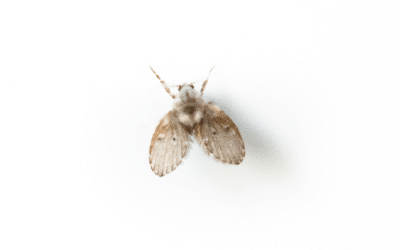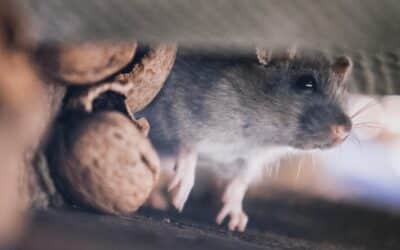Our crops and plants are an important source of food in our world. To survive and thrive, they need some sun, water, and soil. One of the more important factors of their survival and success is cross-pollination. Cross-pollination is crucial and bees are some of the, if not the most important pollinators today.
It turns out that many of our plants and crops require pollination to yield fruit, food, and seeds. More specifically, 35% of crops and 75% of plants require it. Without bees, the world would be a much different place, and not for the better.
Common Types of Bees
There is not just one type of bee of course. There are many different types of bees that help in the pollination of many different plants and crops. Some pollinate a wide range of plants, while others may only pollinate certain ones. Here are some of the more common types of bees that we see today.
Honeybees
Honeybees are one of the more common types of bees in the world. They are the ones that you most likely see in beekeeper hives. Honeybees are beneficial in that they help pollinate a wide range of plants which include crops. They also produce a large amount of honey which many animals and humans value. In terms of their behavior, honeybees are a relatively docile bee and will only sting if disturbed.
Bumblebee
In terms of size, bumblebees are slightly larger than honeybees. For pollination, they prefer wildflowers and crops. This is different from honeybees who have a broader selection in what they pollinate. Just like honeybees, they can sting if you try holding them or disturb their hive.
Carpenter Bees
Carpenter bees are a larger type of bee that you may have seen at some point if you have some wood in your home or shed. They are noticeably larger than bumblebees, who are slightly larger than honeybees. Their behavior is much different from honeybees and bumblebees since they bore holes into wood, hence their name. This makes them appear like quite a nuisance to some people, but before you use pesticides, remember that they are just looking to pollinate. The males appear to be more aggressive than females, but they lack stingers. Females will only sting in defense or if they feel you are too close to the hive.
Sweat Bees
Sweat bees are a type of bee that is attracted to human sweat, hence their name. This leads to them being called a pest by people who don’t like them crawling on them, but they are relatively harmless once they are on you. They walk around collecting sweat and then leave you unharmed. Sweat bees are also good pollinators as they pollinate different types of flowering plants. They aren’t aggressive like some other bees, but it still is best to leave them alone to avoid being stung.
Leafcutter Bees
Leafcutter bees are among the faster flying types of bees. They are named because they cut off parts of leaves to create a nest. Just like other types of bees, they are pollinators. They frequently pollinate wildflowers and various fruits and vegetables. Leafcutter bees are a more docile type of bee as they aren’t as aggressive in defending their hive. They will only sting when they are handled.
As you can see, all these common types of bees are pollinators. Sure, some people see some of them as a nuisance due to their behaviors, but their benefits outweigh the negatives. They are an important part of ensuring that our plants and crops thrive.
How Do Bees Help The Environment
Many bees are pollinators which means they help in the pollination of many plants, crops, fruits, and vegetables. In some areas of the world, they may also be the only pollinators which means those plants wouldn’t survive if the bee population declines to the point that they are wiped out.
When bees pollinate, they help the plants that they pollinate grow. The reason for this is that pollination helps plants produce seeds, which leads to new plants to grow in the future. A plant that isn’t pollinated will not be able to produce seeds or fruit, which means no new plants will grow, and no food will be available from the plant.
Another way bees help the environment is that they help make plants bear new food and seeds. If bees were to completely die out, then there would be quite the food shortage. This is detrimental to not just our economy, but the world as a whole.
Bees help us in very important ways. That is why it is unfortunate that their numbers have been on the decline recently. If you feel a bee has become a threat, then seek a pest control provider who will sustainably control them, without the use of pesticides.
Stinging Bee Pest Control Protocols
Although bees are best left undisturbed, there may be a case where they can become quite the nuisance and disturbance that pest control is needed as a preventative measure, or to control them.
Depending on the bee situation, the pest control technician will determine if preventative measures must be taken, or if a control approach is the best solution. If there is a hive already present, then a control approach will be taken.
After the approach has been chosen, the next step is to identify the type of bee that is causing the disturbance. This is done to ensure which type of control method to go with. The control method is undertaken without the use of pesticides, thus negating the negative impact on the bees themselves.
After choosing the method to control the bees, the pest service will then decide the boundary from which the bees are a threat. Once they are removed from that boundary, then the pest control will cease, unless the bees resume their threatening behavior.
Bees are important to our ecosystem as they play an important role in the success of plants. Without them, we would experience negative effects that can last for many years. This is why, when they become a threat, it is best to control them with proper pest control protocols.
Here at Meers Pest Solutions, we recognize how important bees are to the environment, which is why we don’t use pesticides when controlling them. If you are looking for a more sustainable way of bee pest control, then contact us here to get started!




